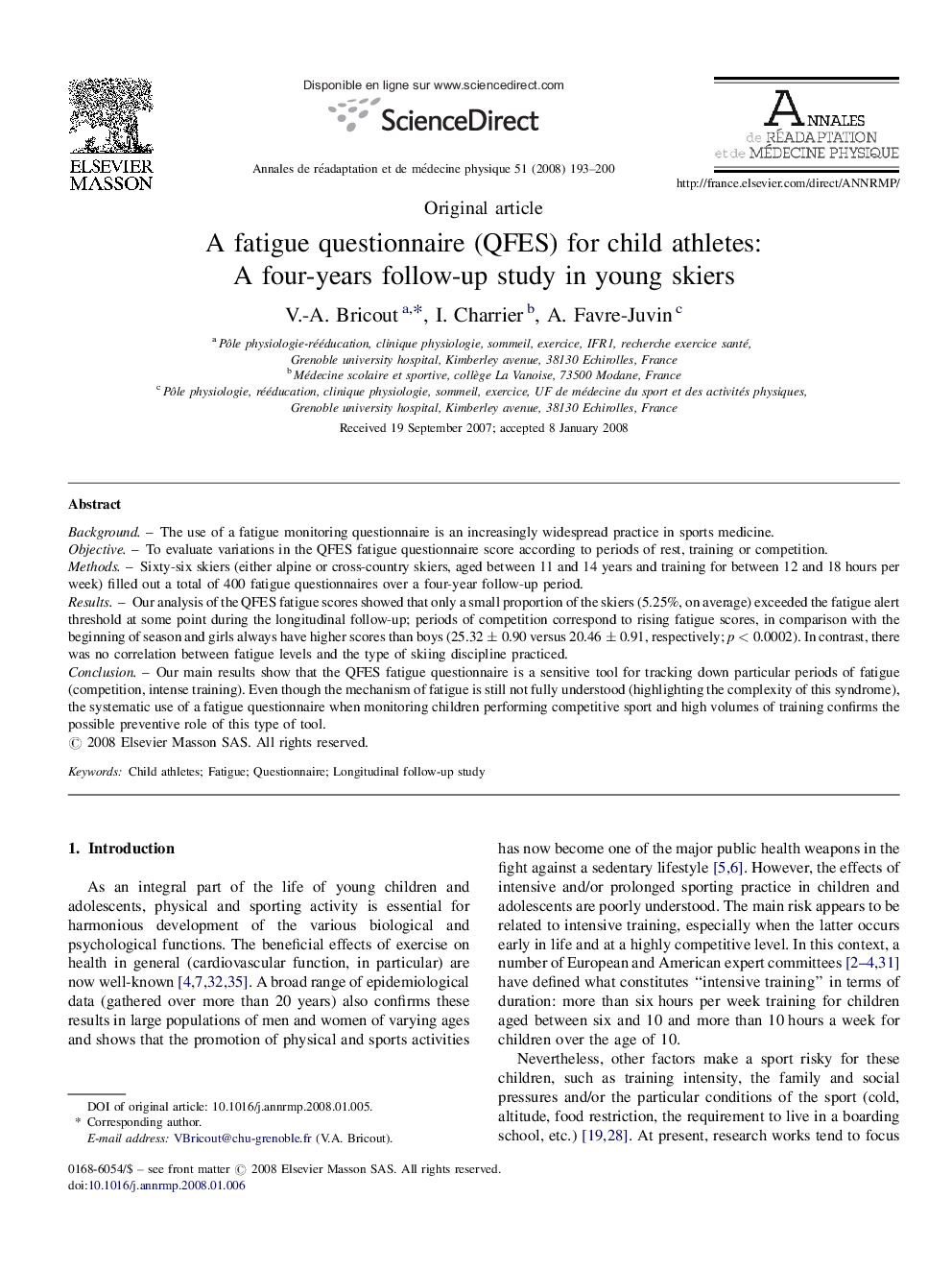| Article ID | Journal | Published Year | Pages | File Type |
|---|---|---|---|---|
| 4040138 | Annales de Réadaptation et de Médecine Physique | 2008 | 8 Pages |
BackgroundThe use of a fatigue monitoring questionnaire is an increasingly widespread practice in sports medicine.ObjectiveTo evaluate variations in the QFES fatigue questionnaire score according to periods of rest, training or competition.MethodsSixty-six skiers (either alpine or cross-country skiers, aged between 11 and 14 years and training for between 12 and 18 hours per week) filled out a total of 400 fatigue questionnaires over a four-year follow-up period.ResultsOur analysis of the QFES fatigue scores showed that only a small proportion of the skiers (5.25%, on average) exceeded the fatigue alert threshold at some point during the longitudinal follow-up; periods of competition correspond to rising fatigue scores, in comparison with the beginning of season and girls always have higher scores than boys (25.32 ± 0.90 versus 20.46 ± 0.91, respectively; p < 0.0002). In contrast, there was no correlation between fatigue levels and the type of skiing discipline practiced.ConclusionOur main results show that the QFES fatigue questionnaire is a sensitive tool for tracking down particular periods of fatigue (competition, intense training). Even though the mechanism of fatigue is still not fully understood (highlighting the complexity of this syndrome), the systematic use of a fatigue questionnaire when monitoring children performing competitive sport and high volumes of training confirms the possible preventive role of this type of tool.
